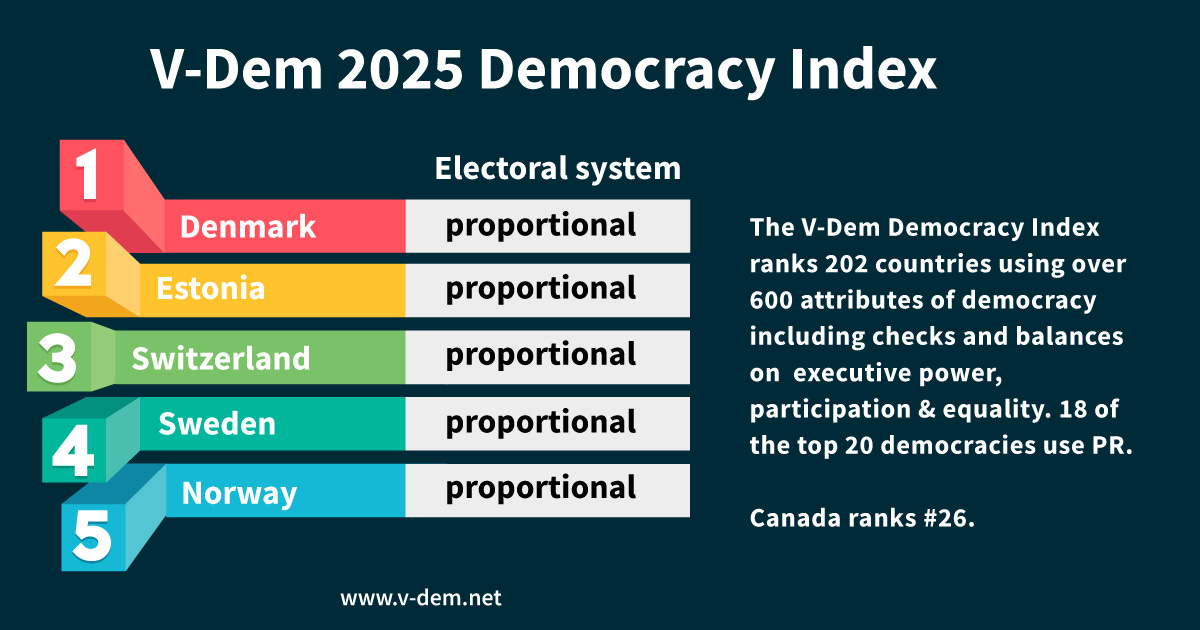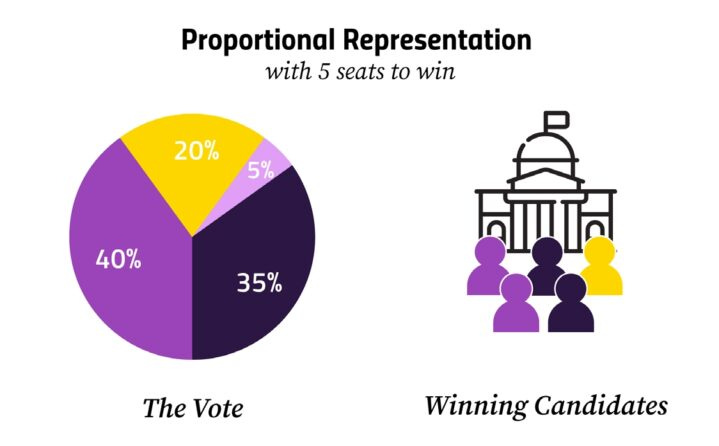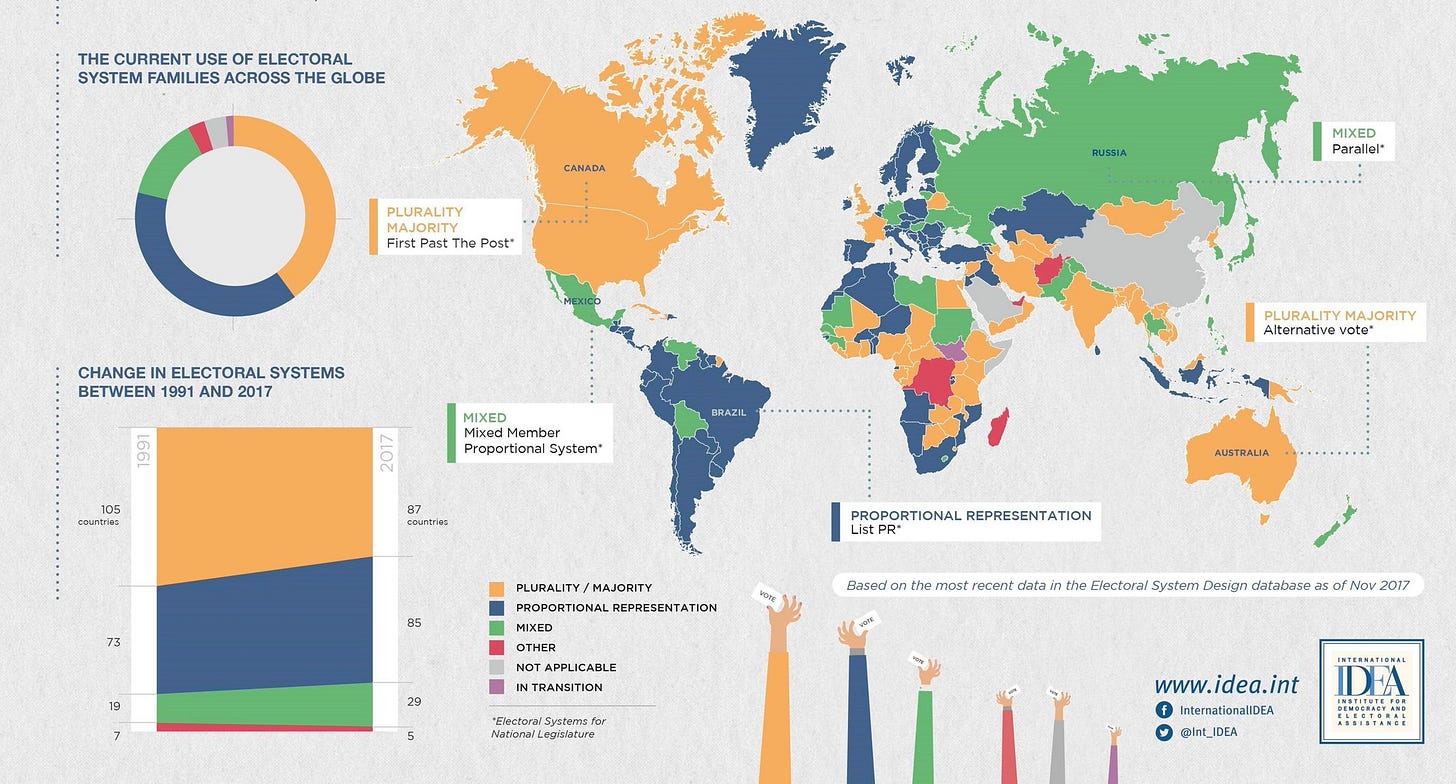The Crisis of Representation in Canadian Democracy
This Federal Election Presents a Fresh Opportunity to Create a Voting System that Represents All Canadians and Protects Our Democracy
We’re getting down to the wire, with our 2025 federal election set for this coming Monday, 28 April. As Liberals and Conservatives duke it out in a now two-party dominated political landscape, we need to have an urgent rethink of how we do voting.
The current winner-take-all model (otherwise known as “first-past-the-post”) not only distorts representation of Canadians, but it fuels disillusionment in voters and worsens polarization — challenges that demand we introduce urgent reform to how we vote.
The Crisis of Representation in Canadian Democracy
The first major concern is that the “first-past-the-post” voting system leads to false majorities. A party can form a majority government with less than a majority of the popular vote. Look no further than Doug Ford’s crushing majority earlier this year that was secured with just 2 in 5 voters in Ontario.
There are a number of issues with this current system, including:
Waste of millions of votes: Back in the 2019 federal election, 1.8 million Green Party voters elected just 3 MPs, compared with 2.9 million Bloc Québécois voters who secured 32 seats.
Strategic Voting: A recent Angus Reid Institute poll recently revealed that 21% of uncommitted voters plan to vote strategically this federal election.
Deepens regional divides: This system also leads to a polarization across the country, with Conservatives dominating in the Prairies, whereas the Liberals urban centres and eastern Canada, reinforcing deep mistrust between provinces.
The Two-Party Trap and Democratic Weakening
As I mentioned earlier, our First-Past-the-Post system creates a “winner-take-all” mechanism that accelerates polarization, particularly echoing the worst aspects of U.S. politics:
The majority of Liberal, NDP, and Conservative supporters believe the worst from their main political opponents, believing they are “selfish” ((65%), “hypocritical” (70%), and “close-minded” (68%).
1 in 3 Canadians say that all parties are “too extreme”, and describe themselves as “political orphans”
Only 17% of Canadians trust politicians, a fact which has worsened by the increasingly concentrated power in leaders’ offices. In fact, Canadian PMs wield more unilateral authority than most OECD counterparts.
This toxic dynamic discourages cooperation between parties, while also marginalizing and limiting the impact of smaller parties. Recent polling trends show that Canada’s remaining major parties: the NDP, Bloc, and Greens, all stand to lose huge chunks of their seats this election.
A great example is comparing results from the last federal election in 2021. Despite the NDP securing just 24 seats in 2021’s redistributed map, proportional representation (PR) would have granted them 53 seats based on them having secured 17.8% of the Canadian vote.
Policy Pathways for Reform
Mixed-Member Proportional Representation (MMP)
Mixed-Member Proportional (MMP) representation combines local representation with proportional outcomes.
Here’s how it works:
Voters elect a local MP and a party list candidate.
Regional "top-up" seats compensate for disproportional results.
Example: A region with 20 MPs might decide to allocate 13 seats to local races and 7 to top-up seats, which ensures that each party’s seat count matches their vote share.
Rural-Urban Proportional Model
Canada has the second largest country in the world (by land-mass), which makes effectively representation and governance a challenge.
But we can tailor our model to fit Canada’s geography, using a rural-urban proportional model. Effectively, this hybrid system:
Maintains single-member ridings in rural areas.
Uses multi-member districts (3-5 MPs) in urban centres.
Adds regional proportionality through supplementary seats.
Key Implementation Principles
Using federal recommendations, these reforms should prioritize:
Legitimacy — Eliminate “wasted votes” through Proportional Representation
Engagement — Introduce ranked ballots
Inclusivity — Mandate gender-balanced candidate lists
Accountability — Strengthen MPs’ ties to their local riding
A Democratic Need
The newly redrawn 343 districts (used for our current 2025 federal election ridings) offers an opportunity to strengthen our democracy.
9 out of 10 ranked countries on the Human Freedom Index 2024 use a form of Proportional Representation, including New Zealand, Ireland, and Sweden. As Fair Vote Canada notes: "A system not designed to reflect voter intent cannot sustain public trust".
The time for gradual change has passed, and flimsy promises to change the system have false.
Electoral reform must be a cornerstone across the political spectrum for 2025. We face urgent challenges — foreign interference and disinformation, climate change and natural disasters, turbulent economics and an increasingly hostile neighbour just south of our border.
Introducing a new system will not only better represent all Canadians, but help strengthen our democracy.














